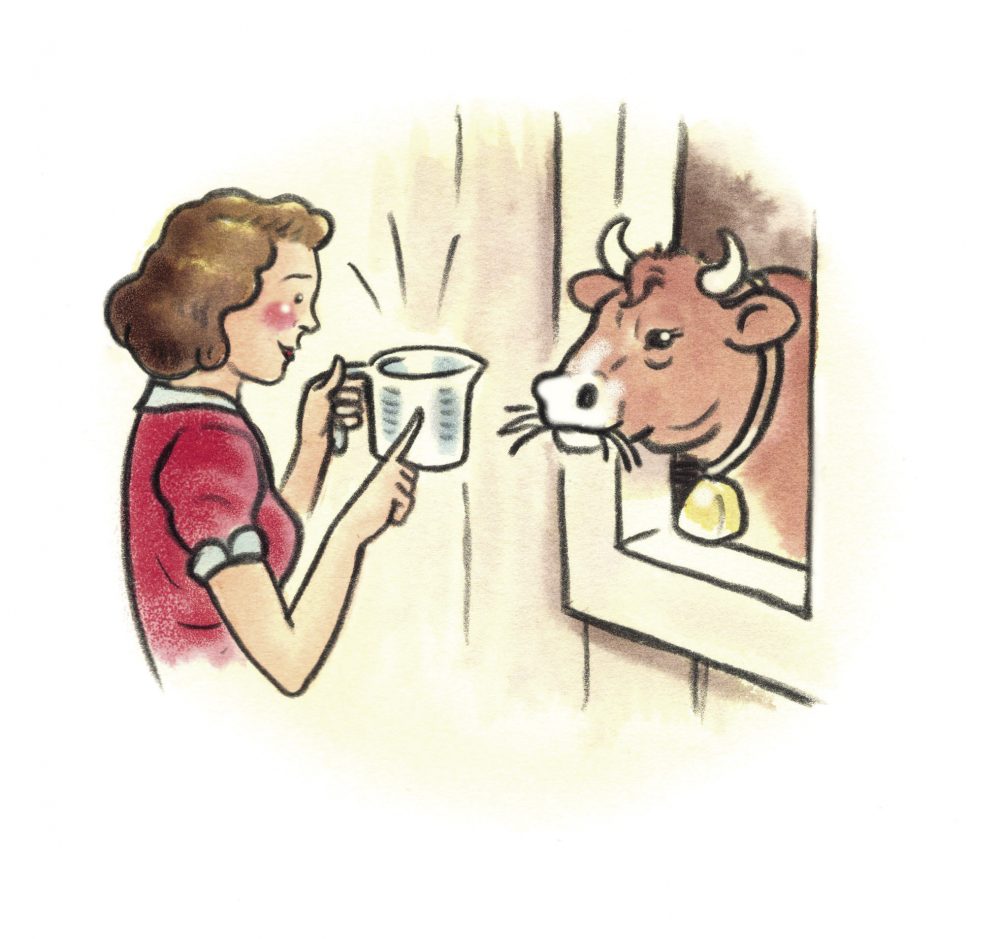
Got Milk?
Grace Murray, from Belchertown, Massachusetts, doesn’t keep milk in the house, which isn’t a problem except when it comes time to bake. Tired of running out to buy some every time, she wondered about the best way to keep milk on hand for baking without it spoiling.
To find the best option, we put several types of milk to the test: canned evaporated milk (which sometimes is sold as “unsweetened condensed milk”); ultrahigh-temperature-processed (UHT) milk (sold in shelf-stable cartons); powdered milk (both whole and nonfat); and fresh whole milk we froze for storage, then thawed for use. We used each as a substitute for whole milk in cupcakes, custard and pancakes. Both the UHT milk and thawed frozen milk performed well in all tests—the UHT milk in fact produced the fluffiest, lightest cupcakes. One of the worst performers was the nonfat milk powder, which resulted in gummy, unappetizing cupcakes. By contrast, however, the whole milk powder—an ingredient that is less common than nonfat milk powder, but relatively easy to find online—produced solid results: The pancakes and cupcakes were tender and the custard set up nicely, with a smooth, velvety texture. Somewhere in the middle was the evaporated milk, which is whole milk that has had up to 60 percent of its water removed, a process that concentrates its natural sugars. In every test, baked goods made with evaporated milk came out dense. (This is why some bakers “reconstitute” evaporated milk by mixing it with equal parts water, adjusting the sugar and fat levels to be on par with regular whole milk.) Overall, we found that UHT milk might be the best option for nonmilk drinkers to keep on hand (and freeze any leftovers for future baking).
A Steamy Proposition
Some recipes for steaming foods call for adding herbs or other ingredients to the liquid. But Bob Rychlicki, of Virginia Beach, Virginia, wondered whether “flavored” steam can actually flavor the food it cooks.
When flavorful ingredients are added to steaming water, some of the flavor compounds are transferred to the steam, which we detect as aroma. But we suspected that those compounds don’t transfer in sufficient numbers to be detected by taste (which is less sensitive than our sense of smell) in the cooked food. To test this, we steamed plain boneless chicken breasts in a steaming basket set over simmering water to which we added four distinct savory items—rosemary, smashed garlic, lemon and bay leaves. This had no effect on flavor. We also tried taking those flavoring ingredients out of the liquid, instead placing them on top of the chicken in one test, and directly beneath the chicken (on the surface of the steamer basket) in another. This had a slight effect: Though faint, the flavors were detectable on the parts of the chicken that touched the aromatics. Unsurprisingly, this kind of direct contact transfers greater quantities of flavor molecules than steam does. By contrast, poaching foods in a flavored liquid proved to be far more effective, transferring the flavor compounds in a much higher concentration. So for best flavor, save your ingredients for poaching, not steaming.
Rising From the Past
Chef Craig Prestero, of Corpus Christi, Texas, had never encountered a cookie that uses yeast as a leavener. That is, until he recently heard of a recipe for pan de polvo (a Mexican shortbread) that does. He was curious whether there is any benefit to baking cookies with yeast.
These days, leaveners such as baking soda and baking powder are commonplace, but it wasn’t always the case. In fact, they didn’t become household items until the 19th century. Before that, cooks often relied on yeast—which feeds on the sugars in flour, producing carbon dioxide gas that creates air bubbles that cause doughs to rise—for leavening power, including in cookies. Many traditional cookie recipes still call for yeast, including Arnhemse meisjes (Dutch sugar cookies) and Burgenländer Kipferl (Austrian butter crescents), as well as many types of spritz cookie. To see how yeast handled more contemporary cookie recipes, we made three different batches of chocolate chip cookies—one using baking soda, another yeast and the third without any leavener at all. The cookies made with baking soda turned out best, baking up chewy and better browned (baking soda’s high pH can enhance Maillard reactions, for better browning). To our surprise, though, the cookies made without any leavener came out perfectly tasty. As for the cookies with yeast? They were a bit cakier in texture, but still quite palatable. Still, unless you’re trying to faithfully recreate a baking recipe from yesteryear, we found little benefit to using yeast in cookies.








